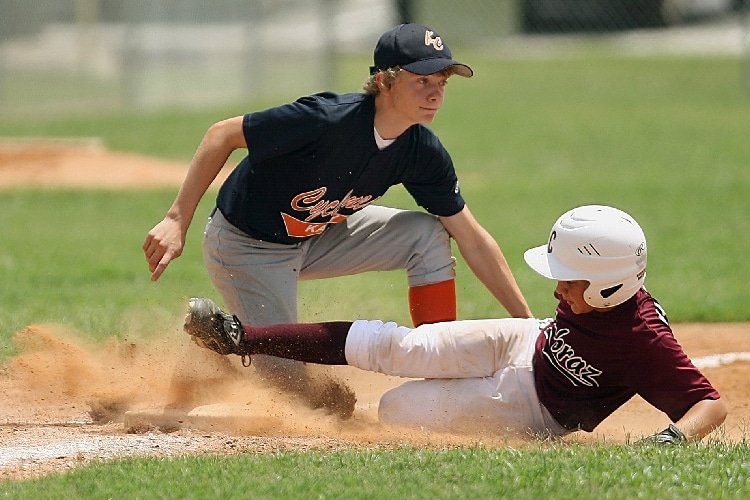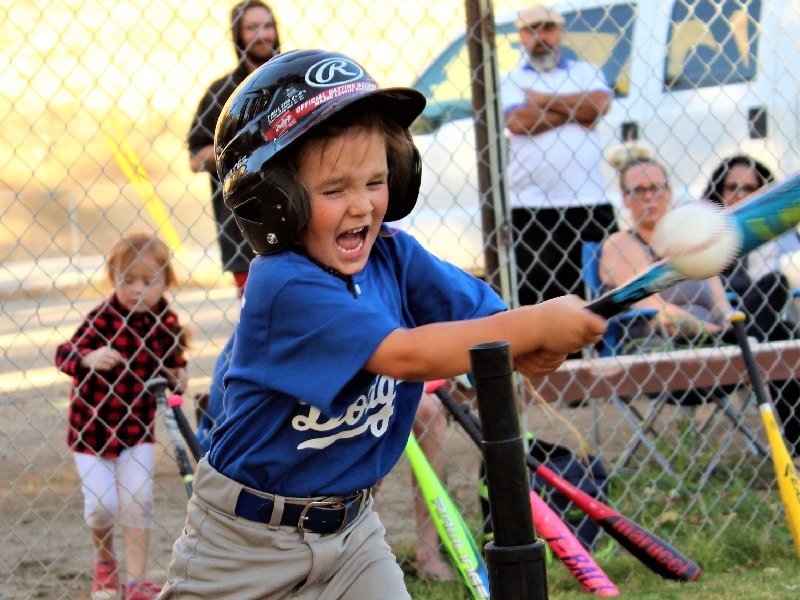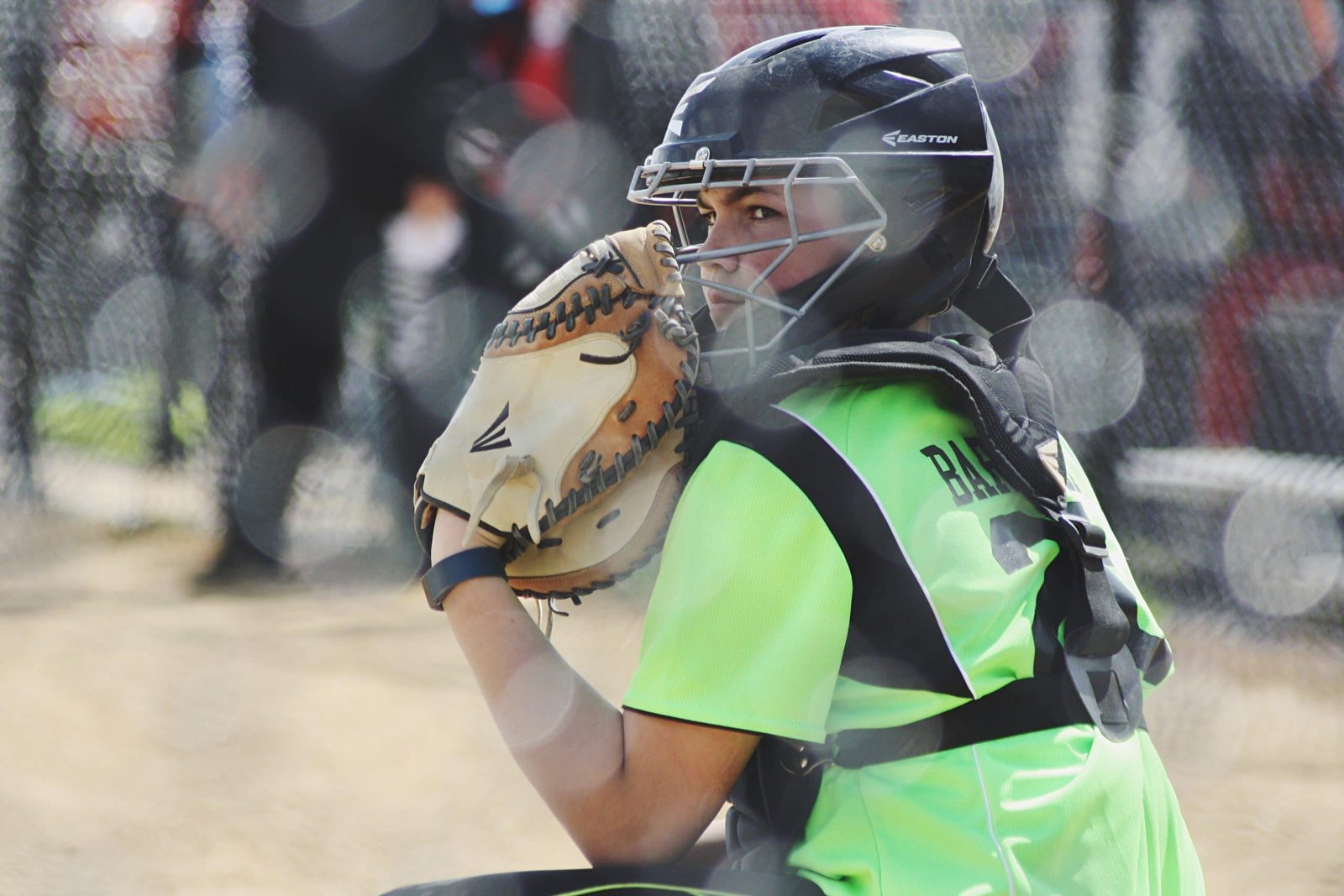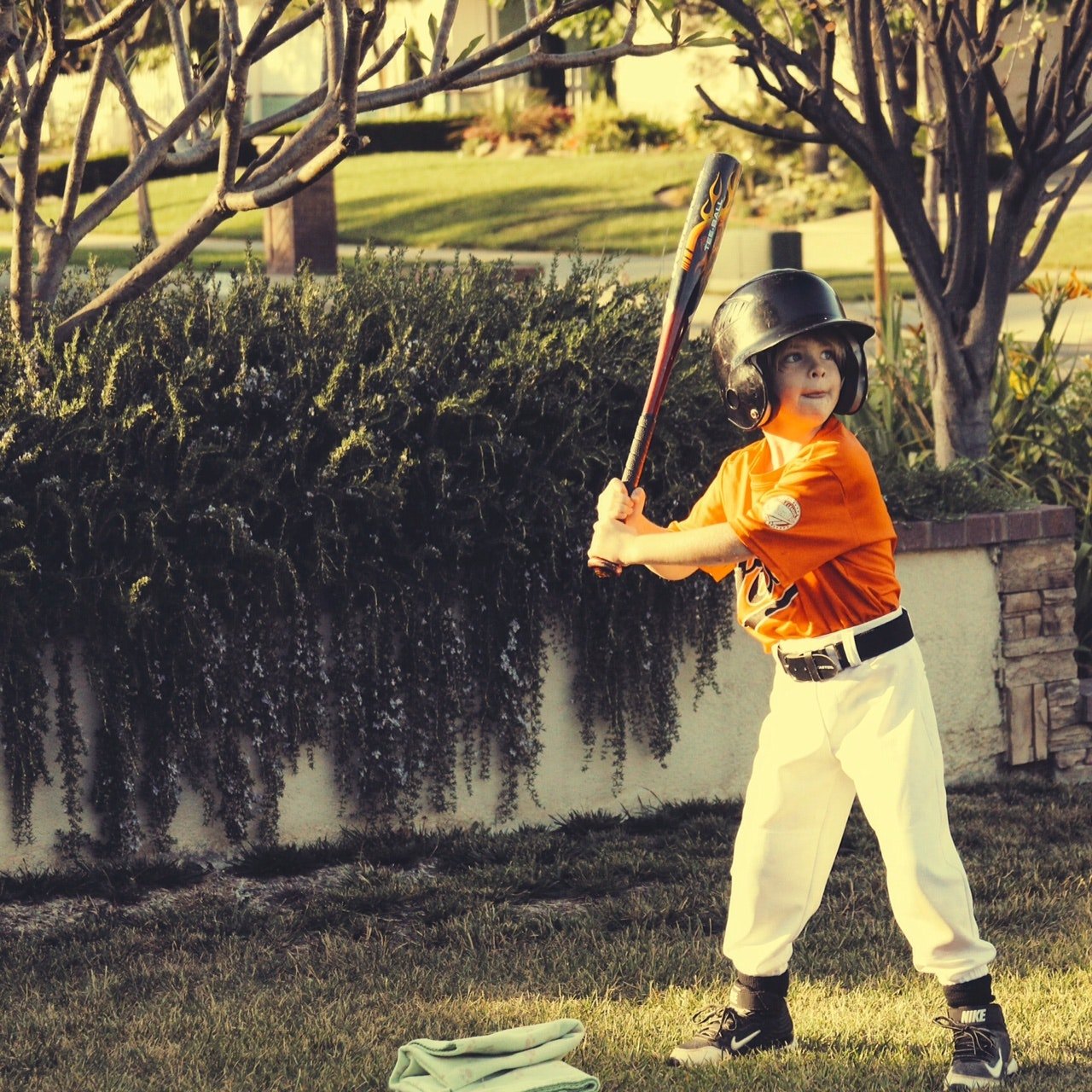Baseball is a very popular sport that is played between two teams. Although frequently referred to as America’s pastime, baseball has also increased in popularity in many other countries. For new fans, it’s important to learn the basic rules of a baseball game to help them truly understand and appreciate all the great moments.
Although baseball rules vary slightly in youth baseball vs. professional baseball, the basic way the game is played is the same. Each team will take turns batting (offense) and fielding (defense) and can only score points (runs) when batting. Scoring a run is accomplished by having a batter round all the bases and reaching home plate. The defensive team that is fielding tries to prevent the team that is batting from scoring runs. This is just a basic top-level description of how baseball is played but we’ll dig into more details below.
You may also like: An Informative Guide to Baseball Chants
History of baseball

Before jumping into the rules of a baseball game, we’ll first visit a little bit of the history of how baseball came about. Unfortunately, the origin of baseball is a little complex as there has been some controversy over this. Initially, there was speculation that baseball derived from an English game called rounders. Baseball executive Albert Spalding disagreed and asserted that baseball originated in America. Eventually, a commission investigated the true origins and concluded that Abner Doubleday was the true founder of baseball in 1839. Abner Doubleday was then known as the father of baseball although this is referred to as the Doubleday Myth and doubt remained.
When it comes to the Major League Baseball we enjoy today, there is less confusion over its origin. Major League Baseball consists of the National League and American League which were formed in 1876 and 1901 respectively.
The objectives of baseball
Baseball consists of two teams competing to score the most runs within a 9 inning game. Professional baseball players play 9 innings in a complete game (Little league players only play 6 innings). Each team will get an opportunity to bat in one half of the inning and field in the other half. The visiting team will bat first in the top half of the inning. The home team will bat in the bottom half of the inning.
When a team is batting, they’ll get an opportunity to score runs. The coach will set the batting order at the beginning of the game and the players will take turns batting in this order. The goal of the team batting is to score as many runs as possible before three outs are made. The team will score a run when a player is able to round all of the bases and make it to home plate.
On the other hand, the fielding team will try to prevent the batting team from scoring runs. The main defensive player is the pitcher who will aim to have the batter strikeout, ground out, or fly out. The other fielders need to stay alert for the cases where a batter puts the ball in play.
Basic rules of a baseball game
- Baseball games consist of two teams.
- Each team contains 9 starting players. These are:
- 1 – Pitcher
- 2 – Catcher
- 3 – First Baseman
- 4 – Second Baseman
- 5 – Third Baseman
- 6 – Shortstop
- 7 – Left Fielder
- 8 – Center Fielder
- 9 – Right Fielder
- There are 9 innings in a professional game.
- If the two teams are tied after 9 innings, extra innings will be played until the tie is broken.
- Each team will bat in one half of the inning and field in the other half.
- The team batting must bat in the order provided at the beginning of the game.
- The batter must remain in the batter’s box for each pitch.
- The pitcher must be touching the pitching rubber before a pitch.
- Baserunners cannot veer off further than 3 feet outside the baseline. The baseline is established when the fielder attempts to tag out the baserunner.

Basic baseball terms
Pitcher terms
- Strikeout: If the pitcher gets three strikes on the batter, the batter will be out via a strikeout. The strikes can come via a swing and miss, a pitch in the strike zone, or a foul ball (although a foul ball will only be a strike if it’s the first or second strike).
- Walk: If the pitcher gets four balls on the batter, the batter will advance to first base via a walk.
- Fastball: One of the most common pitches where a pitcher throws the ball at very high speeds and relatively in a straight path.
- Curveball: A pitch the curves on its path to the plate.
Batter terms
- Single: When a batter hits the ball in fair territory and safely reaches first base.
- Double: When a batter hits the ball in fair territory and safely reaches second base in one play.
- Triple: When a batter hits the ball in fair territory and safely reaches third base in one play.
- Home run: When a batter hits the ball and it goes over the outfield fence in fair territory without hitting the ground, it’s a home run. Another variation is an inside-the-park home run where the ball doesn’t leave the field of play but the batter gets around all the bases.
- Designated hitter: A designated hitter is a player that bats in place of the pitcher.
Fielder terms
- Force out: If a batter hits a ground ball and the fielder throws the ball to the base to which a baserunner must advance to, the baserunner will be out via a force out.
- Fly out: If a hits the ball in the air and a fielder catches it before it hits the ground, it is a flyout. The ball can be in fair or foul territory.
- Tag out: If a fielder gets the ball and tags a baserunner that is not touching one of the bases, it is a tag out.
- Double play: When the fielders get two outs on a single play, it is considered a double play.
- Triple play: A rare feat, a triple play is when the fielders get three outs on a single play.
- Error: A fielder is charged with an error if they make a mistake on a play allowing the batter or baserunner to advance to a base safely.
General game terms
- Fair ball: When a batter hits the ball, if it remains within the foul lines, it is considered a fair ball. Additionally, if the ball hits the ground in fair territory beyond 1st base or 3rd base and then goes into foul territory it is a fair ball.
- Foul ball: When the ball is hit and it doesn’t hit fair territory or a player within fair territory, it is considered a foul ball. It is also considered a foul ball if the ball hits the ground in fair territory but rolls over the foul line before going beyond first or third base.
- Infield fly rule: When there is a popup in the infield and there are multiple baserunners that can be forced out, the umpire can call an infield fly rule if the ball is in fair territory. This rule is necessary when there are fewer than two outs to prevent fielders from purposely dropping the ball in hopes of turning a double or triple play. The result of this is that the batter is automatically out.
You can also have a look at this short video to get more basic information about baseball games:
These are the basic rules of baseball.
Uniform and equipment rules
For baseball fans, knowing the gameplay baseball rules will allow you to better follow and enjoy the game. Additionally, below are some uniform and equipment rules. From a fan’s perspective, these aren’t as important to know to enjoy the game, but still great to know to improve your knowledge of baseball rules.
Ball

A sphere-shaped baseball consists of a small core of cork and rubber or similar material. Yarn and Two strips of white horsehide or cowhide then cover the baseball core. The cover is tightly stitched together with 108 stitches. The weight should be between 5 to 5 1/4 ounces and measure between 9 to 9 1/4 inches in circumference.
Players cannot to use any foreign substance to alter the ball. If a player is caught altering the ball, they would be ejected from the game and also receive an automatic 10 game suspension.
Baseball bat

A legal bat should be a smooth and round stick. The length of the bat should not exceed 42 inches and the thickest part of the bat should not exceed 2.61 inches in diameter. Additionally, the bat should be one solid piece of wood. As for the handle, any material or substance used to improve grip cannot extend past 18 inches from the end of the handle.
Uniforms

The players on each team must wear identical uniforms. The uniforms require a number on the back and this number must be a minimum of 6-inches tall.
Players cannot attach any tape or other material to their uniform if it doesn’t match in color. Although the sleeve on each player’s uniform may vary, the sleeves can’t be cut, ragged, etc…
Gloves

There are different gloves and different size requirements based on player positions. The catcher’s mitt shouldn’t be more than 38 inches in circumference and also not more than 15 1/2 inches from top to bottom.
The first baseman’s glove should not be more than 13 inches from top to bottom and not more than 8 inches wide in the palm area.
The fielder’s glove shouldn’t be more than 13 inches from the tip of any one of the 4 fingers to the heel of the glove. In regards to the width of the glove, it shouldn’t be more than 7 3/4 inches.
Helmet

A baseball player is required to wear a protective helmet when they’re a batter or base runner. In Major League Baseball, the players must wear a single ear-flap helmet (or double ear-flap if they choose). The catcher must use a protective catcher’s helmet and face mask.
Additionally, any base coaches must also wear a protective helmet when on the field.
Cleats
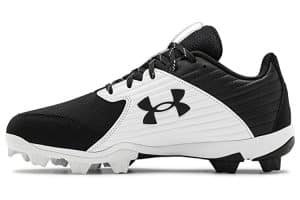
As is the case in some other field sports, baseball players wear cleats to improve traction on the field. Wearing cleats can improve a player’s performance as well as prevent injuries since the cleats protrude into the ground to avoid slipping. Baseball cleats are also designed to provide ultimate comfort and support since players will be wearing them for many hours and running at full speed in them.
The baseball field
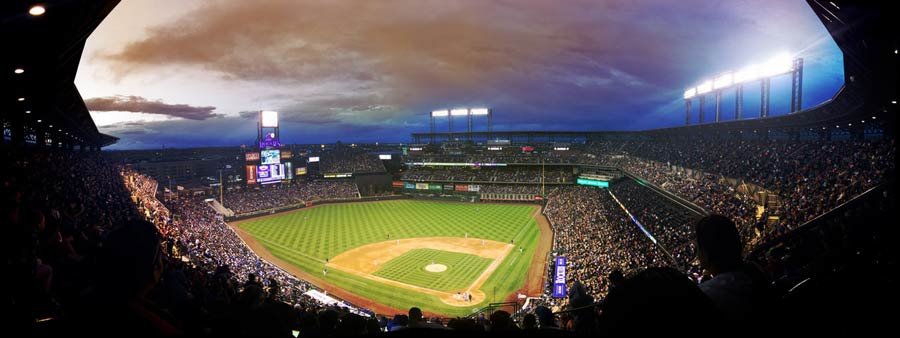
Baseball stadiums and fields all differ from each other in some way. However, there are baseball rules that dictate the lengths for different parts of the baseball field.
The infield
The infield, sometimes referred to as the baseball diamond, is a square-shaped area of the field with each side being 90 feet. The four bases are located on the infield. These bases are home base (home plate), first base, second base, and third base. The distance between home plate to first base is 90 feet which is the same distance as first base to second base, second base to third base, and third base to home plate. From home plate to second base and third base to first base, the distance is 127 feet and 3 3/8 inches.
The outfield
Outside the diamond, we have the outfield which is the area between the two foul lines beyond first and third base. The foul lines extend from home plate along the outside of the first and third base bags and to the outfield wall where the foul poles are located. The foul lines are used to determine whether a ball is in fair territory or foul territory. If a ball lands in the outfield between the two foul lines or a fielder touches the ball within this same area, the ball is considered a fair ball.
Other features
Each team has a dugout that contains benches for the players to sit. The dugout faces the field and is in foul territory between home plate and first base and home plate and third base.
The bullpen is the area where the pitchers can warm up before the game and also for pitchers to warm up when getting ready to replace the current pitcher.
There are two coaches’ boxes on the field. One is next to first base and another next to third base. Coaches can stand in these boxes to relay messages to baserunners. These coaches are required to wear a helmet for their protection.
Conclusion
Knowing the basic baseball rules should be sufficient for fans to understand and enjoy watching or playing a baseball game. When you dig deeper into all the different baseball stats, things may get a little more complex. However, the only thing that determines who wins and who loses is the total runs scored by each team and basic rules have this covered. As you watch (or play) more games, you’ll even start to get an understanding of all the stats. Before you know it, you’ll be a baseball guru!




